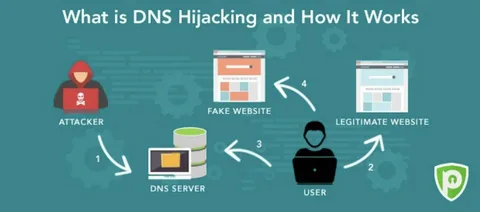Protecting your online assets is paramount. One common threat that website owners and internet users face is DNS hijacking. DNS hijacking occurs when an attacker gains unauthorized control over a domain’s DNS settings, redirecting traffic to malicious websites or intercepting sensitive information. To safeguard your online presence and maintain the integrity of your website, it is crucial to understand how to prevent DNS hijacking. In this article, we will discuss six effective strategies that can help you defend against this pervasive cyber threat.
Table of Contents
Implement Strong Passwords and Two-Factor Authentication (2FA)
One of the primary entry points for DNS hijacking is through compromised credentials. To fortify your DNS infrastructure, start by employing robust passwords that are difficult to crack. Avoid using easily guessable information and consider combining uppercase and lowercase letters, numbers, and special characters.
Enabling two-factor authentication (2FA) adds more security to your DNS settings. As a result, you significantly reduce the risk of unauthorised access by requiring a secondary verification method, such as a unique code sent to a mobile device.
Regularly Update and Patch DNS Software
Keeping your DNS software up to date is crucial for maintaining a secure environment. Developers often release updates that address vulnerabilities and enhance the overall security of the software. Failure to install these updates promptly leaves your DNS infrastructure susceptible to exploitation.
Employ DNSSEC for Data Integrity
DNS Security Extensions (DNSSEC) is a cryptographic technology that ensures the authenticity and integrity of DNS data. By digitally signing DNS records, DNSSEC allows users to verify that the information they receive is legitimate and has not been tampered with during transit.
Implementing DNSSEC safeguards against DNS hijacking attempts that involve forging or altering DNS responses. By validating the integrity of DNS data, you can prevent users from being directed to malicious websites and mitigate the risks associated with DNS hijacking.
Regularly Monitor DNS Activity and Implement Real-Time Alerts
Monitoring your DNS activity is essential for promptly detecting any signs of unauthorized access or suspicious behavior. By analyzing DNS logs and keeping a close eye on DNS queries, you can identify anomalies that may indicate a potential DNS hijacking attempt.
According to Risk Xchange, a leading cybersecurity risk rating and management platform, “DNS hijacking can be difficult to detect without proper monitoring and real-time alerts in place.” Therefore, it is crucial to invest in monitoring tools that provide immediate alerts for any unusual DNS activity, allowing you to take swift action.
Regularly Backup DNS Settings and Verify Changes
Backing up your DNS settings at regular intervals is a vital practice that can help you recover quickly during a DNS hijacking incident. Storing these backups in secure locations, separate from the live environment, ensures you have a clean copy to restore if necessary.
Furthermore, verifying any changes to your DNS settings is crucial. By regularly reviewing your DNS configurations and validating each modification, you can identify any unauthorized alterations promptly and take appropriate measures to prevent further compromise.
Educate and Train Employees on DNS Security Best Practices
While implementing technical measures is essential, it’s equally important to educate and train your employees on DNS security best practices. Many DNS hijacking incidents occur due to human error, such as falling victim to phishing attacks or unknowingly providing login credentials to malicious actors.
Conduct regular training sessions to educate your employees about the dangers of DNS hijacking, common attack vectors, and how to recognize and report suspicious activities. Emphasize the importance of following certain browsing habits, such as avoiding clicking on suspicious links or downloading files from untrusted sources.
Preventing DNS hijacking requires a comprehensive approach that combines technical measures with employee education and awareness. By implementing strong passwords, enabling two-factor authentication, regularly updating and patching DNS software, employing DNSSEC, monitoring DNS activity, backing up DNS settings, and educating employees, you can significantly reduce the risk of falling victim to this cyber threat.
